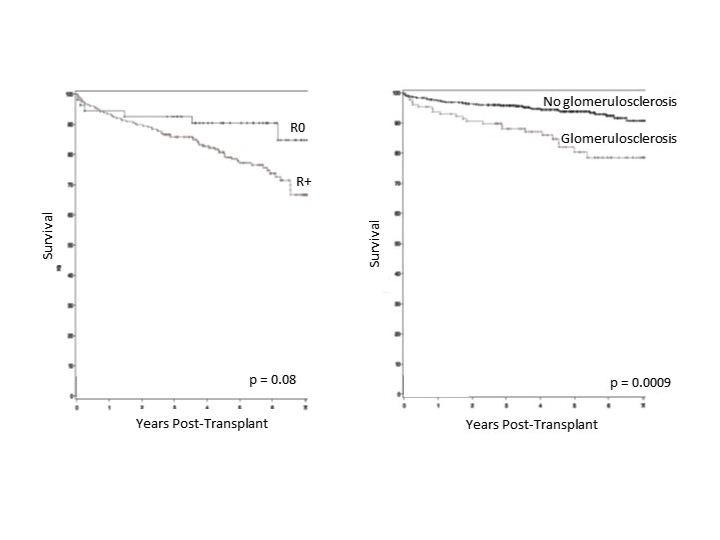Do Higher Remuzzi Scores Make Good Kidneys Bad? Examining Histologic Criteria within the Framework of Single Kidney Transplantation
1Department of Transplantation, University of Wisconsin, Madison, WI, 2Department of Transplantation, Piedmont Transplant Center, Atlanta, GA, 3Department of Statistics, University of Wisconsin, Madison, WI
Meeting: 2020 American Transplant Congress
Abstract number: B-038
Keywords: Donors, marginal, Graft failure, Kidney transplantation, Resource utilization
Session Information
Session Name: Poster Session B: Kidney Deceased Donor Selection
Session Type: Poster Session
Date: Saturday, May 30, 2020
Session Time: 3:15pm-4:00pm
 Presentation Time: 3:30pm-4:00pm
Presentation Time: 3:30pm-4:00pm
Location: Virtual
*Purpose: The Remuzzi score (RS), a histologic tool to assess chronic allograft damage, can guide allocation to single (SKT) or dual (DKT) kidney implantation. RS ≤3 is considered suitable for SKT. However, no literature addresses whether the RS can predict outcomes in SKT. In addition, no data have addressed which components of the score are more predictive than others. The purpose of this study was to determine 1) whether higher RS predicts inferior outcomes and 2) whether the individual scoring components differentially affect outcomes.
*Methods: We performed a retrospective review of 722 SKT recipients; pre-transplant biopsy data were complete in 334 (46.3%). Two groups were defined consisting of SKT without Remuzzi pathology on biopsy (R-) and with pathology present (R+). The R+ group was subdivided into R1-R4 by RS. Histologic RS components were examined for contribution to post-transplant outcomes. Kaplan-Meier estimates were used to determine graft (GS) and patient survival (PS) and compared with log rank test. Multivariate analysis controlled for RS, histologic components, diabetes, and donor and recipient age.
*Results: When groups were divided by R- and R+, a trend toward lower 3-year (92.6% vs 86.6%) and 5-year (90.4% vs 79.1%) GS emerged in the R+ group (p=0.08). When examining R+ subgroups, no significant difference was found in graft or patient survival among individual groups, RS 1-4 (p=0.25 and 0.31, respectively). However, when histologic components were examined individually, glomerulosclerosis had a significant impact on 5-year death-censored GS (91.9% vs. 80.0%, p< 0.001). On multivariate analysis, glomerulosclerosis was the only RS component that impacted death-censored GS (HR 2.94, p<0.001).
*Conclusions: Transplanting kidneys with histologic pathology present on pre-transplant biopsy may lead to inferior outcomes compared to those without. In kidneys with pathology there are no differences in outcomes between RS 1-4 despite the usual practice of allocating RS 4 to DKT; it is equivalently safe to transplant an R4 kidney as an R1 kidney. Renal transplant recipients may derive greater benefit from a single R4 kidney than from remaining on dialysis. Among the components of RS, glomerulosclerosis is the strongest predictor of graft failure and should be considered especially concerning for graft loss when found on biopsy.
To cite this abstract in AMA style:
Fleetwood V, Kensinger C, Papageorge C, Aufhauser D, Pasha P, Leverson G, Welch B, Foley D. Do Higher Remuzzi Scores Make Good Kidneys Bad? Examining Histologic Criteria within the Framework of Single Kidney Transplantation [abstract]. Am J Transplant. 2020; 20 (suppl 3). https://atcmeetingabstracts.com/abstract/do-higher-remuzzi-scores-make-good-kidneys-bad-examining-histologic-criteria-within-the-framework-of-single-kidney-transplantation/. Accessed December 14, 2025.« Back to 2020 American Transplant Congress

